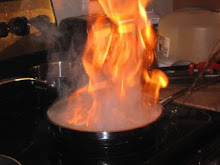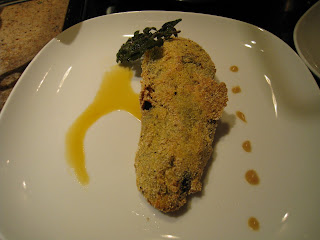In late summer of 2007, well before the Iowa Caucuses and the never-ending Democratic Presidential Primary and wholesale slaughter of the Republican Party in November, the New York Times Caucus blog casually reported on a relatively innocent comment about Obama in an attempt to poke a little fun at a line that fell flat:
One line that landed a little flat, though, was when Mr. Obama sympathetically noted that farmers have not seen an increase in prices for their crops, despite a rise in prices at the supermarket.
“Anybody gone into Whole Foods lately and see what they charge for arugula?” the senator said. “I mean, they’re charging a lot of money for this stuff.”
The state of Iowa, for all of its vast food production, does not have a Whole Foods, a leading natural and organic foods market. The closest? Omaha, Minneapolis or Kansas City.
ARUGULA!!! ELITIST!!! The Right-Wing Noise Machine went into hyperdrive. A Google search for "Obama arugula" now returns an unimaginable 145,000 hits. A Google search of prominent wingnut blog Redstate.com alone returns 86 hits. The message was clear: Real Americans don't eat arugula.
What??
Where did this come from? Why is it that blue blooded Americans only eat tasteless, watered-down iceberg lettuce, but enjoying the bitter peppery flavor of arugula relegates you to an Ivory Tower? And of course, it's not just arugula. Real Americans drink beer (specifically Bud, Miller, or Coors. Tasty microbrews are still elitist. And don't get me started on anything Belgian.). Effete liberals drink wine. Thinking about some organic iceberg lettuce? Not so fast. A search of that earlier mentioned conservative site for "organic elitist" returns 26 hits. In fact, any food or drink that has been prepared for the purpose of tasting exceptionally good...all of it. It's elitist. And bad.
This post isn't just for me to rant about the Republican Noise Machine. I mean, it's that too. But it's also about the sad state of affairs the sets entire genres of food (most importantly the organic variety) into a cultural gallows. Ezra Klein stumbled across this very concept recently as he described a fundraiser held by Alice Waters:
And that's the other problem. Good food -- the sort Waters features at her restaurant -- is considered a luxury of the rich rather than a social justice issue. As Waters frequently argues, no one is worse served by our current food policy than a low-income family using food stamps to purchase rotted produce at the marked-up convenience store.
I get this just as much as anyone. When I was working two jobs to get by just after college, I knew there would be about 4 or 5 days every month where I would survive solely off of french fries and $1 double cheeseburgers at McDonald's. That money wouldn't have been particularly well spent on organic carrots from Whole Foods (about $3 on their own). But my point is that it shouldn't...be this way.
It's hard to escape the morbid irony of the morbid obesity omnipresent in our nation's poorest neighborhoods. The cheapest food available to us is loaded up with trans fats, sodium, saturated fats, perservatives, chemicals...The best, freshest, safest, most healthy foods are loaded up with markups for an organic label. The rich get healthier, and the poor get fatter and sicker. (Oh, and they often don't have health insurance, so...) Hey Republicans out there, this is one of many reasons why voting with your pocketbook doesn't always work. We are quite literally staring at a market failure that is screwing over poor Americans in place that hurts even worse than their pocketbooks: their own bodies.
Klein also notes one of my fears about writing this blog as he finishes describing Waters' meal:
However, it wasn't clear that [politicians] would be publicly promoting the "new American table" anytime soon. It was the sort of dinner that would work well in an attack ad. A politician who spent a lot of time extolling the virtues of such dining would be served up medium-effete in his next election.
Frankly, I'd be surprised if, when I run for office one, I'm not attacked for my "Horseradish Crusted Rack of Lamb with Cherry Gastrique" or the upcoming "Torched Escolar." But I can only hope that the mainsteaming of fine cuisine via outlets like the Food Network and Top Chef (see? Food Network does do SOMETHING right apart from Iron Chef!) will make such a focus on good, healthy food become less the aberration of a sushi-eating (by the way, what the HECK is wrong with sushi???) latte-sipping liberal and more the usual habits of families around the country. To do that, the price of such good, healthy food simply MUST come down. As Klein concludes:
But Waters' vision is almost depressingly realistic. An America in which schoolchildren are assured fresh and nutritious meals and the government doesn't spend billions subsidizing high-fructose corn syrup would be cheaper to the taxpayer and healthier for the nation. What we'd spend purchasing fresh produce we'd almost certainly save in medical bills. Our current food policy makes us fatter, sicker, and poorer. And, as Waters reminds us, it tastes bad.







